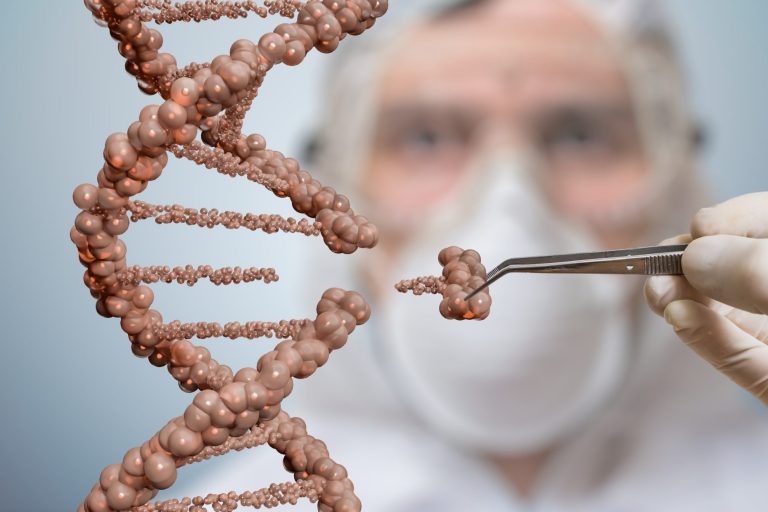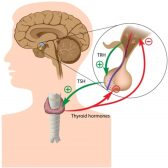Genetic Engineering Advantages & Disadvantages

Genetic engineering has pros and cons.
Table of Contents
Through genetic engineering, scientists are able to move desirable genes from one plant or animal to another or from a plant to an animal or vice versa. (Ref. 1) By desirable, it means it can produce an outcome that is regarded as generally “beneficial” or “useful”. The organism that has undergone such genetic modification is referred to as “genetically modified organism” or GMO. In essence, genetic engineering is a technology wherein a specific gene can be selected and implanted into the recipient organism. The cell that received such an implant can, therefore, begin producing substances with the desired functions. Genetic engineering uses recombinant DNA, molecular cloning, and transformation.
Genetic engineering has become a mainstream part of our lives because of the many advantages involved. Here are some of them:
- Genetic engineering made it possible to create crop varieties regarded as “more beneficial”. Unlike selective breeding, modern genetic engineering is more gene-specific. One of the downsides of selective breeding is the possibility of generating traits that are less desirable. This is averted by modern genetic engineering that introduces specific genes. (Ref. 1) Since the process is rather straightforward, it is relatively faster than selective breeding (see previous tutorial) in terms of coming up with crops with the desired traits. Examples of genetically-engineered plants with more desirable traits are drought-resistant plants, disease-resistant crops, plants that grow faster, and plants (e.g. legumes) fortified with more nutrients. (Ref.1, 2) The latter may be achieved by introducing genes that code for (1) trace-element-binding proteins, (2) overexpression of storage proteins already present, and/or (3) increased expression of proteins that are responsible for trace element uptake into plants. (Ref. 2)
- Organisms can be ‘tailor-made’ to show desirable characteristics. Genes can also be manipulated in trees, for example, to absorb more CO2 and reduce the threat of global warming. Through genetic engineering, genetic disorders may also be fixed by replacing the faulty gene with a functional gene. Disease-carrying insects, such as mosquitoes, may be engineered into becoming sterile insects. This will help in curbing the spread of certain diseases, e.g. malaria and dengue fever.
- Genetic Engineering could increase genetic diversity and produce more variant alleles that could also be crossed over and implanted into other species. It is possible to alter the genetics of wheat plants to grow insulin as an example.Nevertheless, there are two sides to a coin. While genetic engineering is beneficial in ways mentioned above it is also implicated in certain eventualities deemed as “unpleasant” or disadvantageous.
- There are concerns over the inadvertent effects, such as the creation of food that can cause an allergic reaction, GMO that can cause harmful genetic effects, and genes moving from one species to another that is not genetically engineered. (Ref. 1) It has been shown that GMO crop plants can pass the beneficial gene along to a wild population. An example is the sunflowers genetically-engineered to fend off certain insects. They were observed to have transferred the gene to their weedy relatives. (Ref. 3) Nature is an extremely complex interrelated chain. Some scientists believe that introducing genetically-modified genes may have an irreversible effect with consequences yet unknown.
- Genetic engineering borderlines on many moral and ethical issues. One of the major questions raised is if humans have the right to manipulate the laws and course of nature.
Genetic engineering may be one of the greatest breakthroughs in recent history alongside the discovery of the atom and space flight. However, there are plausible risks involved. Thus, governments have produced legislation to control what sort of experiments are done involving genetic engineering.
Despite the strict regulation, genetic engineering progressed. It has led to many experimental breakthroughs over the years.
- At the Roslin Institute in Scotland, scientists successfully cloned an exact copy of a sheep, named ‘Dolly’, in July 1996. This was the first successful artificial cloning of a mammal. (Ref. 4)
- Scientists successfully manipulated the genetic sequence of a rat to grow a human ear on its back.
These procedures are essentially a form of “therapeutic cloning”. Embryonic cells can now be cloned. They are grown for health purposes, such as to obtain biological organs for transplantation. Cells are also cloned in the laboratory for research purposes. (Ref. 1) How about humans? Can a human individual be cloned? At this point in time, cloning a human individual is not possible. What can be cloned is the genotype but not the phenotype. (Ref. 4)
Genetic engineering has been made possible with the discovery of the complex and microscopic nature of DNA and its component nucleotides. For us to understand chromosomes and DNA more clearly, they can be mapped for future reference. More simplistic organisms such as fruit fly (Drosophila) have been chromosome-mapped due to their simplistic nature. They will require fewer genes to operate.
The process of genetic engineering involves splicing an area of a chromosome, a gene, that controls a certain characteristic of the body. The enzyme endonuclease is used to split a DNA sequence as well as split the gene from the rest of the chromosome. For example, this gene may be programmed to produce an antiviral protein. This gene is removed and can be placed into another organism. For example, it can be placed into a bacterial cell where it can be sealed into the DNA chain using ligase. When the chromosome is once again sealed the bacterial cell is now effectively re-programmed to replicate this new antiviral protein. The bacterium can continue to live a healthy life while genetic engineering by human intervention has manipulated it to produce the protein.
 | GENETIC ENGINEERING – BENEFITS & RISKS QUIZ Use this quiz to test how broadly the students know about the benefits and the risks of genetic engineering. Subjects: Genetics & Evolution |
References:
- Genetically engineered foods: MedlinePlus Medical Encyclopedia. (2020). Medlineplus.Gov. https://medlineplus.gov/ency/article/002432.htm
- Lönnerdal, B. (May 2003). Genetically Modified Plants for Improved Trace Element Nutrition. J. Nutr. 133:1490S-1493S.https://www.biologyonline.com/articles/genetically-modified-plants-improved
- Ohio State University. (2002). Genetically Modified Crops May Pass Helpful Traits To Weeds, Study Finds – Biology Online Archive Article. Biology Articles, Tutorials & Dictionary Online. https://www.biologyonline.com/articles/genetically-modified-crops-may
- Ayala, F. J. (2015). Cloning humans? Biological, ethical, and social considerations. Proceedings of the National Academy of Sciences, 112(29), 8879–8886. https://doi.org/10.1073/pnas.1501798112
Further Reading:
- Biomanufacturing. Biotech-Careers.Org. https://biotech-careers.org/job-areas/biomanufacturing
You will also like...

Hormone Production
Hormones are chemical messengers produced by specialized glands and they were produced by switching on the genes designe..

Community Patterns
Learn about community patterns and the ecological factors influencing these patterns. Revisit some of the ecosystems you..

Lights’ Effect on Growth
This tutorial elaborates on the effect of light on plant growth. It describes how different plants require different amo..

Physical Development in Humans
This tutorial elaborates on the physical development of humans, particularly from puberty to adulthood. Read this tutori..

Plant Cells vs. Animal Cells
Plant cells have plastids essential in photosynthesis. They also have an additional layer called cell wall on their cell..

New Zealand’s Unique Fauna
Meet some of New Zealand's unique fauna, including endemic insects, frogs, reptiles, birds, and mammals, and investigate..
